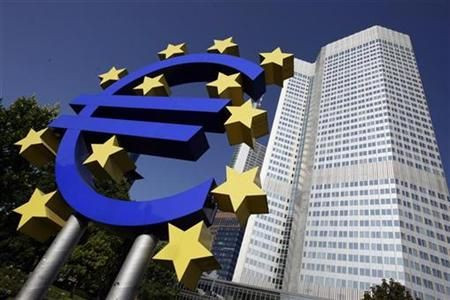Eurozone Unemployment Increases Year On Year, Inflation Rates Hold Steady In July

The unemployment rate in the 17-nation euro zone remained stable in June 2013 compared with the previous month, but rose in comparison with the same period last year, while annual inflation in July held steady after rising for two months, official figures released on Wednesday said.
Eurostat, the statistical office of the European Union, or EU, said the euro zone registered an unemployment rate of 12.1 percent in June 2013, same as in May, but higher compared with 11.4 percent in the same period last year. The unemployment rate for the EU was 10.9 percent, down slightly from 11.0 percent in May but up from 10.5 percent in June 2012.
Figures showed 26.4 million people were unemployed in the EU in June 2013, of whom 19.2 million were in the euro zone. Compared with May 2013, the number of people unemployed decreased by 32,000 in the EU and by 24,000 in the euro zone. But, compared with June 2012, the number of unemployed rose by 1.08 million in the EU and by 1.12 million in the euro zone.
The lowest unemployment rates were recorded in Austria (4.6 percent) and Germany (5.4 percent), and the highest unemployment rates were seen in Greece (26.9 percent in April 2013) and Spain (26.3 percent).
In comparison, the unemployment rate in the U.S. in June was 7.6 percent -- the same level as in May -- and down from 8.2 percent in June 2012.
In the EU, 5.51 million people under the age of 25 were unemployed in June, of whom 3.52 million lived in the euro zone. Compared with June 2012, the figures showed a fall in youth unemployment by 43,000 people in the EU and an increase of43,000 in the euro zone.
In June 2013, the youth unemployment rate was 23.2 percent in the EU and 23.9 percent in the euro zone, compared with 22.8 percent and 23.0 percent, respectively, in June 2012. The lowest youth unemployment rates were observed in Germany (7.5 percent) and Austria (9.3 percent), and the highest in Greece (58.7 percent in April 2013) and Spain (56.1 percent).
Eurostat data showed annual euro zone inflation in July was 1.6 percent, stable compared with June, and below the European Central Bank’s inflation ceiling of 2 percent, for the sixth consecutive month.
The steady inflation rate is expected to allow the ECB to loosen monetary policy as part of its efforts to navigate the region out of recession. However, an analyst who spoke to Bloomberg said the ECB is worried more about disinflation than about inflation.
“It’s a worry that inflation will be settling below their price-stability goal, and that’s one of the reasons why over the last few months the ECB has adopted a more dovish tone,” Nick Kounis, an economist at ABN Amro Bank NV in Amsterdam, told Bloomberg.
© Copyright IBTimes 2024. All rights reserved.






















